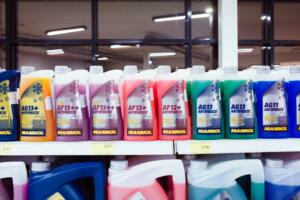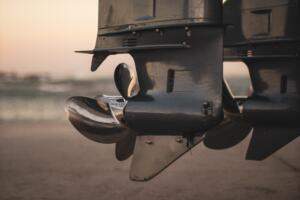 If you own a home right on the lake, then you may be lucky enough to have direct access to the water.
If you own a home right on the lake, then you may be lucky enough to have direct access to the water.
There’s nothing quite like being able to walk out of your lake home, onto the dock, and right on to your boat!
In light of colder weather, though, you might not be taking it out as often. This is especially true if you’re on a lake that can freeze during the winter time.
Exposure to harsh temperatures for an extended period of time can threaten your boat’s health. We suggest you winterize it to minimize any damage from occurring.
Winterize Your Boat, Protect Your Investment
- Fill your boat’s fuel tank – Ensure the boat’s fuel tank is filled roughly to capacity. But remember, don’t fill it all the way up! Leave a little space to allow for the expansion that often occurs during cold weather. Don’t forget to add gasoline stabilizer, as well. This will help keep your boat’s fuel from degrading during the winter. It also slows down the oxidation process in addition to preventing varnish and corrosion.
- Close your boat’s fuel valves – To avoid condensation from occurring inside the fuel tank, be sure to close the fuel valves. You’ll also want to replace the fuel filter and water separator. Afterwards, seal all thru-port exhaust ports using duct tape.
- Coat your boat’s spark plugs – Remove the engine flame arrester and, while the engine is running, shoot two-cycle oil into the carburetor. In order to burn any excess fuel, turn the fuel supply off. To coat the spark plugs, spin the engine a few times. Replace the plugs but don’t connect any of the wires. These steps will prevent the pistons of the boat from being exposed to air and dampness.
- Fill your boat’s engine block – First, make sure all leftover engine coolant is drained from the engine block. Then fill it with antifreeze. Be sure to use antifreeze that’s appropriate for the model of your boat.

- Change the gear oil of your boat’s engine – If your boat contains an inboard/outdrive engine, you’ll want to flush the lower unite gear case lubricant and replace it to keep the engine’s internal parts from becoming damaged by water.
- Remove the boat’s battery – Before taking the battery out of your boat, ensure that it’s fully charged. Store the battery in a place that is safe and dry for the remainder of the winter.
- Check the boat’s propeller and hub – Inspect the blades for damage or severe wear and tear. Replace or repair anything that’s too damaged.

- Protect your boat’s plugs and bulb sockets – Use a moisture-displacing lubricant to coat the plugs and bulb sockets’ contact points. With electrical tape, cover the plugs to keep them dry for the remainder of winter.
- Clean your boat – After following these steps, clean it one more time to remove any surface dirt that might have collected. Before you start, make sure the cleaning solutions you’re about to use are appropriate for the boat. For the most part, over-the-counter glass cleaners, vinyl cleaners and vinegar and water solutions should be safe and effective.
- Cover your boat – Lastly, cover the boat with a waterproof tarp or canvas to protect it from rain, snow, ice, and other debris.
Winterizing your boat is incredibly important. Exposure to harsh winter weather can be damaging to what may be one of your biggest investments. Be sure to use these tips to ensure your boat will survive the off-season and be ready to hit the water running next year!

